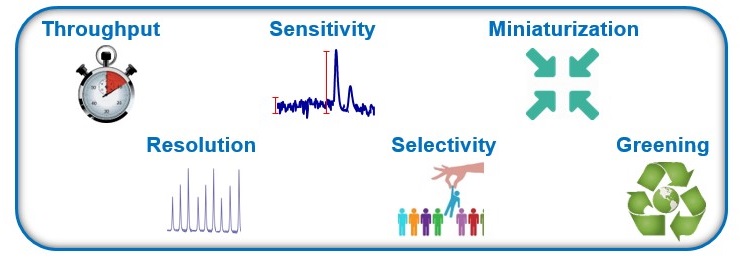Innovations in Chromatography

Our laboratory specializes in chromatography, with a primary goal of advancing LC/SFC instruments, consumables, and analytical strategies to enable the characterization of both small and large molecules. We focus particularly on enhancing throughput, automation, selectivity, sensitivity, and peak capacity. Over the past few years, our research has explored a range of topics, including:
- Evaluation of modern SFC instrumentation and columns for pharmaceutical and biomedical applications
- Opportunities and limitations of HILIC as an alternative to RPLC
- Application of HPLC modeling software (e.g., Osiris, DryLab) to accelerate method development
- Impact of high-temperature operation in HPLC on efficiency, retention, and selectivity
- Innovative column technologies (core-shell, sub-2 µm, monoliths) to improve kinetic performance
- Fundamental studies of native LC modes (SEC, IEX, HIC, affinity LC)
- Investigation of pressure and frictional heating effects on chromatographic performance
- Development of automated screening workflows across various LC modes
- Assessment of band broadening due to LC instrumentation
- Retention time prediction (QSRR) to speed up method development in LC
We have demonstrated the applicability of these approaches for a wide range of samples, from simple pharmaceutical formulations to bioanalytical, anti-doping, and plant extract analyses.
We are always interested in collaborating with instrument and consumable providers as alpha or beta testers for innovative chromatographic systems, columns, and related technologies. If you are interested in such collaborations, please feel free to contact us at davy.guillarme@unige.ch.
In addition to our research, we are also trying to make fundamental concepts of chromatography more accessible to the scientific community. To this end, we have developed three educational Excel tools for learning HPLC, which have been downloaded from our website more than 100,000 times worldwide and are widely used for training and teaching newcomers in the field.